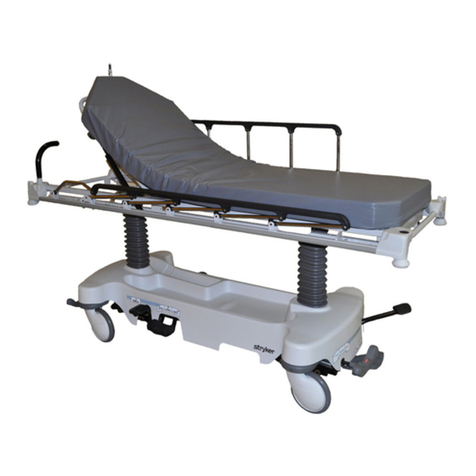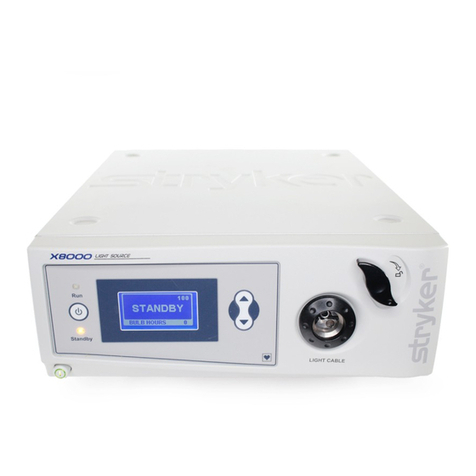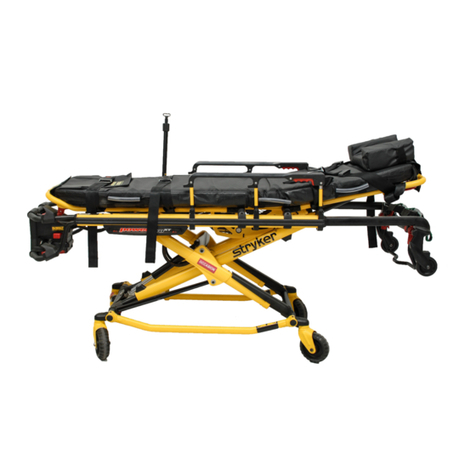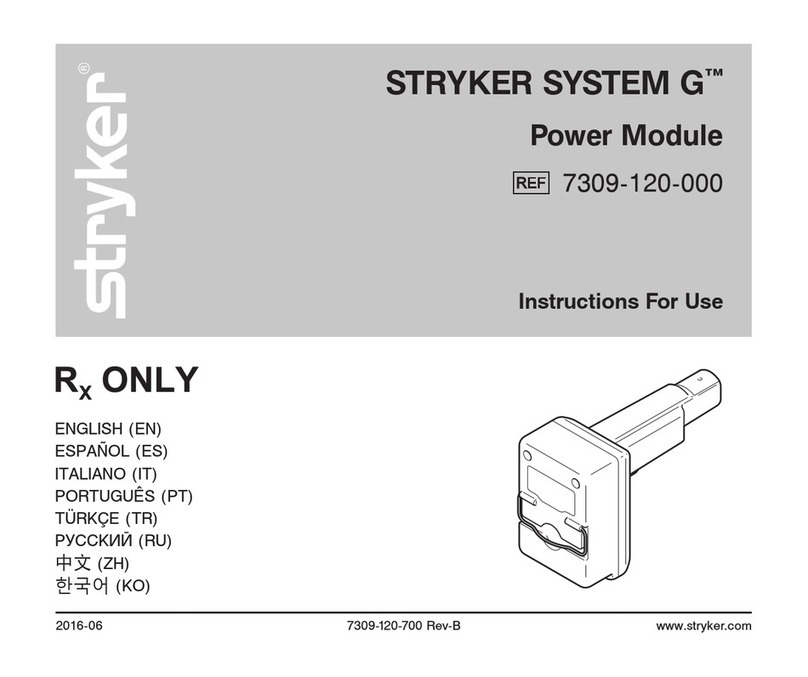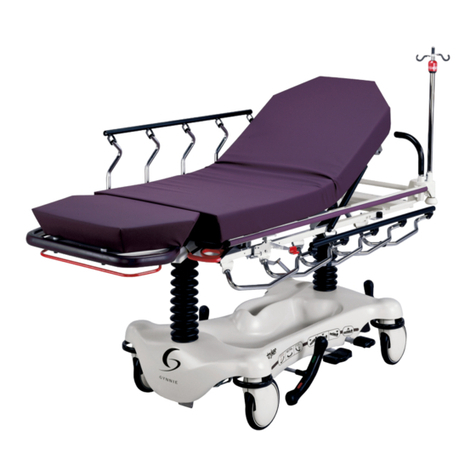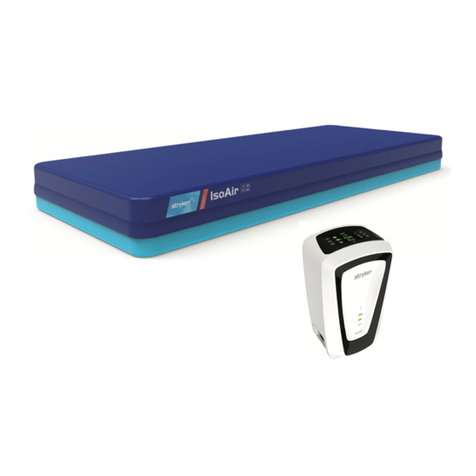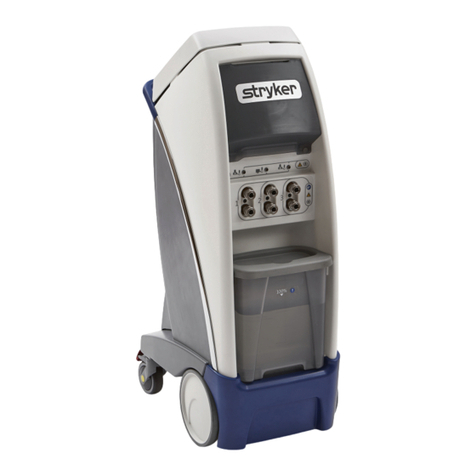
www.stryker.com 2950-109-005 REV B 1-5
Return To Table of Contents
English
Introduction
INTENDED USE OF MANUAL
This manual is designed to assist with the operation and the maintenance of the Stryker Medical 2950 XPRT™
therapeutic support surface. Carefully read thoroughly before using or beginning maintenance on the XPRT. To ensure
safe operation of this equipment, it is recommended that methods and procedures be established for educating and
training staff on the safe operation of the XPRT therapeutic support surface.
BRIEF PRODUCT DESCRIPTION AND INTENDED USE STATEMENT
INTENDED MEDICAL INDICATION:
The XPRT™ support surface is intended to assist with the treatment of pulmonary complications associated with
immobility of human patients in acute care. XPRT is intended to assist in the prevention and treatment of pressure
ulcers associated with immobile, critically ill or injured human patients. XPRT is intended to assist in the therapies of
percussion, vibration, and continuous lateral rotation therapy (CLRT). XPRT offers turn assist and pressure redistribution.
XPRT also offers a powered low air loss feature to provide a flow of air and a breathable cover to assist in maintaining
the micro-climate of the skin. The XPRT support surface is a powered support surface replacement system that is
integrated with the Stryker InTouch™ bed.
INTENDED PATIENT POPULATION:
The XPRT support surface is intended for patients with existing pressure ulcers or patients at risk of developing
pressure ulcers. Please refer to the operations manual for environmental requirements. The patient must not exceed
safe working load specified by the frame and accessories.
XPRT IS NOT INTENDED TO BE USED ON:
• Patients with unstable fractures
• Patients with unstable spinal cord injuries
• Patients in skeletal traction
• Stroke victim
CLRT, TURN ASSIST, ROTATION, PERCUSSION AND VIBRATION ARE NOT INTENDED TO BE USED ON:
• Patients with significant hemoptysis
• Patients for whom a head down position is contraindicated (e.g. head injury)
• Patients with bleeding disorders
• Patients with rib fractures
• Patients with a predisposition to pathologic fractures
• Patients for whom the techniques cause increased dyspnea or wheezing
• Patients who are hemodynamically unstable
PERCUSSION/VIBRATION THERAPY IS NOT INTENDED TO BE USED ON:
• Patients with rib fractures
• Patients experiencing persistent intracranial hypertension
• Patients exhibiting bronchospasms
• During post-operative periods following cardiac surgery
INTENDED USER PROFILE:
The XPRT™ therapeutic support surface is for patient use in acute care settings, to include critical care, step down,
progressive care, med/surg, sub acute care, and post anesthesia care unit (PACU) or other locations in a professional
health care facility as prescribed by a healthcare professional. XPRT is not intended to be used in a home health care
environment. The typical operator for XPRT would be healthcare professionals.
INTENDED CONDITION OF USE AND EXPECTED LIFE:
XPRT is not suitable for use in the presence of flammable anesthetic mixture with air rich in oxygen or nitrous oxide.
XPRT is designed for a five (5) year expected life for the product and three (3) year life for the covers, under normal
use, conditions, and with appropriate periodic maintenance as described in the maintenance manual for each device.











